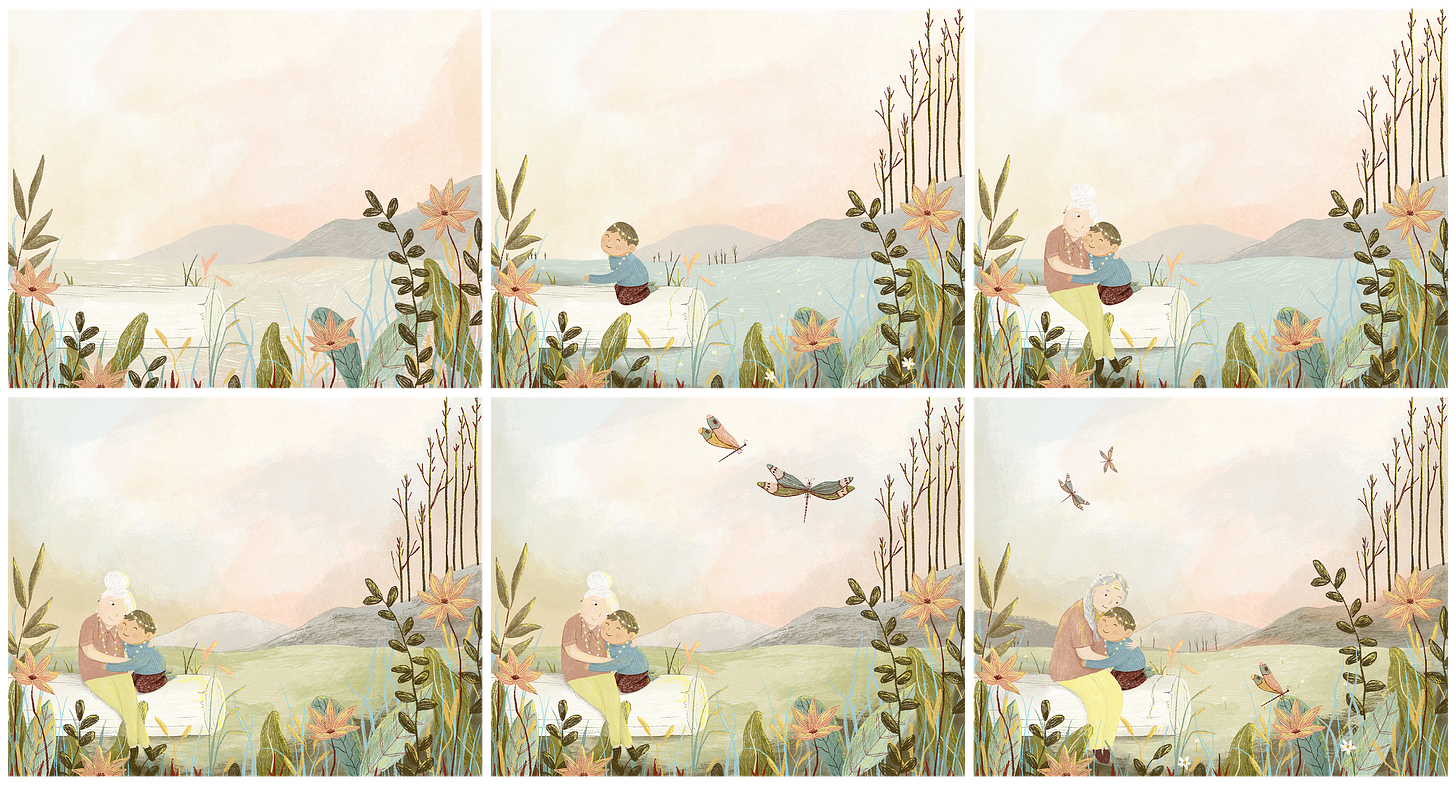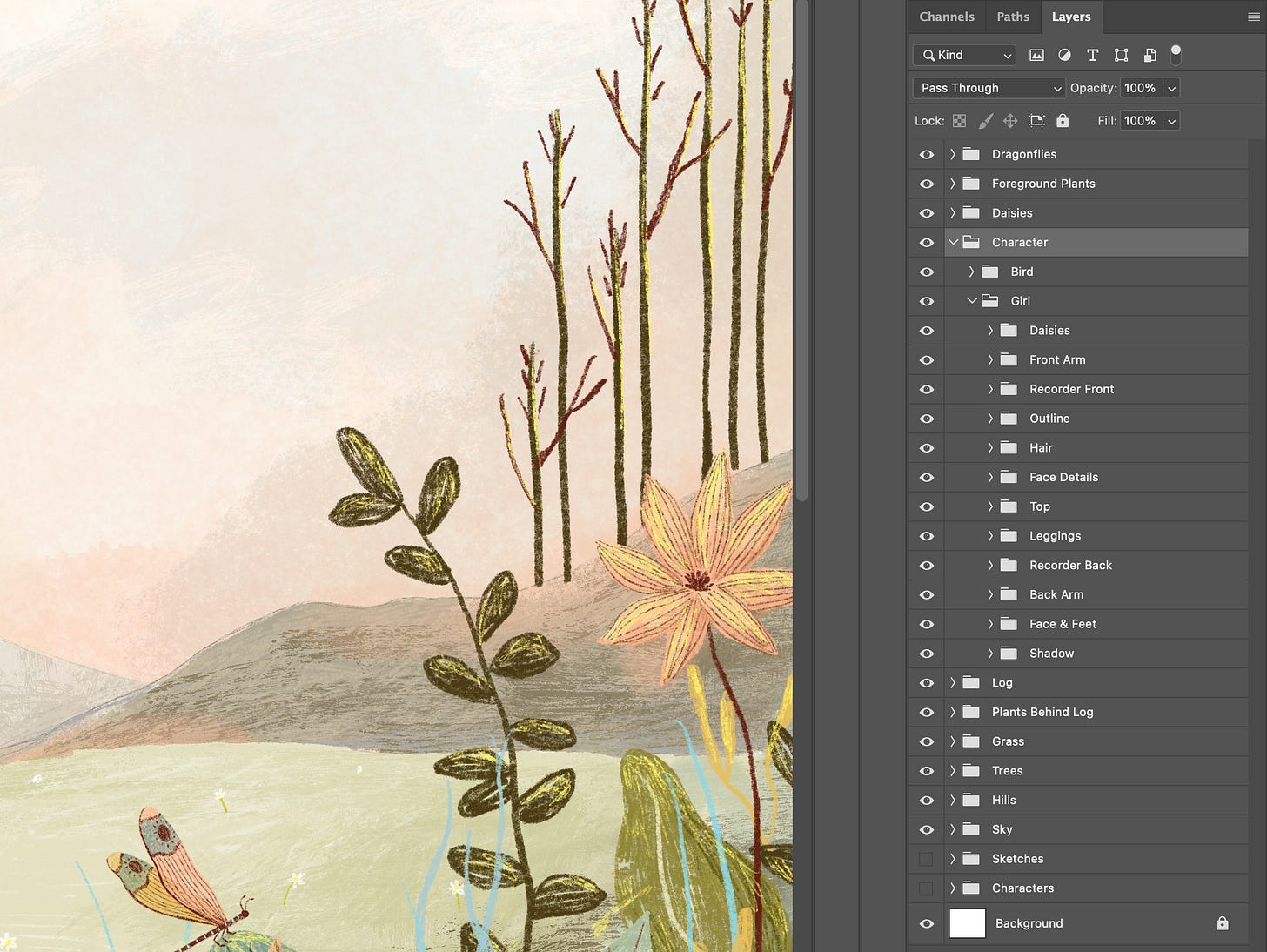Making of an Illustration - Part 3
Finishing Touches
Welcome to part 3, the final part in my Substack series about my illustration process. Apologies, this last one gets a bit technical!
Procreate
If you’ve ever worked in Procreate before, you’ll know that there is a limitation on the number of layers you can have within a document. Exactly how many layers depends on the dimensions and resolution of your art board (and the capacity of your machine) but however many there are, I always find there are never enough! There are two ways to get around this problem (if you don’t want to change your set-up specs, that is). The first is to use fewer layers overall, perhaps merging them as you go, which may work for you if your style isn’t too complex. But if, like me, you typically use an inordinate amount of layers in each piece, you might need a different solution.

In the past, I would merge layers whenever they were running out, but I found this to be increasingly problematic, especially when edits were needed further down the line. Instead, I now rely on the “Duplicate” function, which enables you to copy your entire board, layers and all, into a new document.
Make sure you don’t accidentally hit the “Delete” button. It’s easily done and in Procreate, when a file is gone, there’s no getting it back!
As I touched on in Part 1, I always group my layers as I work. It helps me to stay organised and to find specific layers quickly, but it also has the benefit of making the next stage much easier.
When I’ve exhausted all of my layers and duplicated the file, I then merge all the existing groups in the new document, taking care to keep the original board in tact. Once I’ve merged, I can continue to work as normal, creating new layers and groups as before. By repeating this process, I can end up with several versions of the same illustration, which I then transfer into Photoshop for the final stage…
Final Edits
Once in Photoshop, I can then copy all of the layered groups into the same document, knowing that I’ll have full editing capability by having kept the separate layers in tact.
It takes a fair bit of time to get all the layers in the right order and correctly named but it’s worth it to know that I have everything in one place. Then the fun part can begin!
I love editing in Photoshop, possibly because the end is in sight but also because it’s a joy to see all of the hard work paying off as the illustration finally comes together. This is where I’ll make all the final decisions about colour and composition. Most of this has already been done in the previous stages, but there’s something about having the image on a large screen in front of you that clarifies where you want to take those final tweaks. I play with the colour balance here, using the “Colour Overlay” tool to adjust until I’m happy, working one layer at a time. You really could play with the possibilities forever! But I tend to find the changes I want to make gradually decrease until all of a sudden, I will stand back and feel DONE. It’s the best feeling!
A Change of Heart
As you’ll have seen from my process images, this piece started out as a scene showing a grandma and her grandson making daisy chains. It was originally a brief set by my agent but for some reason, it never felt right to me. I don’t think I gave myself enough time to play with the original characters and as a result, it just always felt a bit off. But I loved the setting and general vibe and I didn't want it to go to waste, so I decided to revisit it and swap out the original characters for this sweet girl, calling the wildlife to her with her music. What do you think, did I make the right choice? Let me know in the comments (I can take it!).
Thank you so much if you’ve followed along with my process. I will leave you with this time lapse of the new character being drawn.
If you have any technical questions (or any questions really) about my process, pop them in the comments and I’ll do my best to answer!
Thanks for reading,
Kate x




My illustrations are not very complex but I have lots of folders and lots of layers and all in different colors so I can find them easily. I just like to have the possibility to edit everything later if I need to. I use CSP so there is no limit to the number of layers, plus the files are much lighter than in Ps which my computer appreciates.